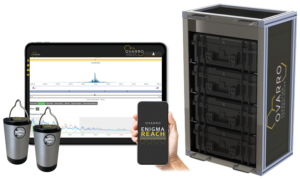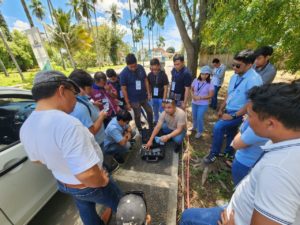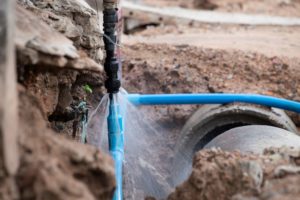Data-Driven Blockage Detection Cuts Pollution

Data-Driven Blockage Detection Cuts Pollution (Ovarro Ltd)
In spring 2022, Anglian Water became the first utility to adopt BurstDetect, Ovarro’s artificial intelligence (AI) led system that uses machine learning to detect rising main sewer bursts before pollution occurs. Following this, the utility purchased BlockageDetect which analyses data from the same assets to alert to sewer blockages.
In February 2024, it adopted PumpInsight, a secondary component platform that uses AI, including machine learning, to monitor telemetered pumping stations and detect performance issues to support predictive pump maintenance.
Anglian Water and Ovarro’s PumpInsight project has been shortlisted in the asset management initiative of the year category at the Water Industry Awards 2024, taking place on 4 July in Birmingham.
Preventative decision-making
Water companies in England and Wales will rollout a major investment programme in 2025-30, with ambitious plans to cut sewage spills and pollution. There will be a particular focus on reducing rising main sewer bursts.
Rising mains are pressurised pipes that carry wastewater from pumping stations to treatment works. They are high-risk, critical assets - if they burst, large volumes of high-pressure wastewater can spill into the environment quickly, risking significant ecological damage.
Technical and logistical limitations in monitoring have meant that utilities have often been alerted to bursts and leaks by members of the public. This reactive, alarm-led approach means it is often too late for water companies to take early action to limit impact.
Advances in technology mean water companies have already begun the move to proactive network monitoring to reduce pollution events. Their asset management plans for the period 2025-30 - AMP8 - commit to accelerating this transition by implementing new tools, in particular systems that use data to support preventative decision-making.
Anglian Water is the largest water and sewerage company in England and Wales geographically, managing a sewer network of 76,000km, which includes 6,000 rising mains. The company’s 2023-2025 pollution reduction plan reports that in 2022, 9% of pollution incidents were attributed to burst rising mains.
Unique algorithms
BurstDetect and BlockageDetect are cloud-based platforms that use unique algorithms to detect rising main bursts and blockages. The systems do this by using existing data from wastewater pumping stations, for example, by analysing filling and emptying times of a wet well in relation to the pumps and identifying any deviations from normal behaviour.
If data suggests a potential burst or blockage, an alert is sent to operators for early response. Data is presented on a dashboard accessed by the Ovarro Atrium platform.
The technology can be applied to nearly all pumping stations – even those with just basic pump status monitoring – and requires no additional hardware, making 100% network coverage possible. The system accepts data at a range of monitoring frequencies with algorithms being applied to understand and characterise ‘normal’ pumping station behaviour.
In 2022, Ovarro wastewater systems helped Anglian Water detect 50 bursts on rising mains, each time preventing a pollution incident. To date, more than 2,000 alerts have been generated by Ovarro predictive systems with an accuracy rate of around 70%. In addition, the insights have helped inform a rehabilitation programme of 42 rising main sewers.
The systems are self-learning and as the algorithms continue to improve over time, so will the accuracy of the alerts.
Pump monitoring
With the same advanced AI and machine learning capabilities, Ovarro’s PumpInsight platform monitors pump efficiency changes over time, analysing data anomalies and tracking performance trends. By enabling proactive maintenance strategies, PumpInsight significantly reduces the risk of unplanned pump failures and associated environmental pollution incidents.
Paul Louth, head of water recycling networks at Anglian Water, said: “BurstDetect and BlockageDetect have been successful in identifying rising main incidents and there is potential to do more to support our drive to eliminate serious pollution events.
“The solutions can self-learn with feedback, enabling us to further refine the success rate of the alerts alongside our own learning of how to use the insight. Operationally, we have honed our response to large rising main events and have been able to prevent significant impact, as a result of the processes. We are pleased with the impact this combined work is starting to have.
“Moving onto PumpInsight, we’ve had brilliant success during a trial of this work that gives us confidence in the approach. Like the algorithms, we are continuously learning how we can best utilise the information produced, and find new applications which will give us greater visibility of the health of our assets.
“Our focus continues to be the implementation of new smart technologies and integrating these with our business-as-usual approaches in our quest to become preventative rather than reactive. BurstDetect, BlockageDetect and PumpInsight will be a key part of this.”
Gavin Russell, regional manager at Ovarro, said: “Our suite of proactive wastewater solutions - BurstDetect, BlockageDetect and PumpInsight - was developed in collaboration with UK water companies, in response to the sector’s challenge to cut pollution in a sustainable and cost-effective way.
“We worked closely with Anglian Water on the implementation of the systems and we’re pleased the technology is effectively supporting pollution reduction goals. By adopting our full suite of AI-driven wastewater solutions, Anglian Water proves its commitment to cutting pollution by embracing innovation and machine learning.”
Source: Ovarro Ltd.







